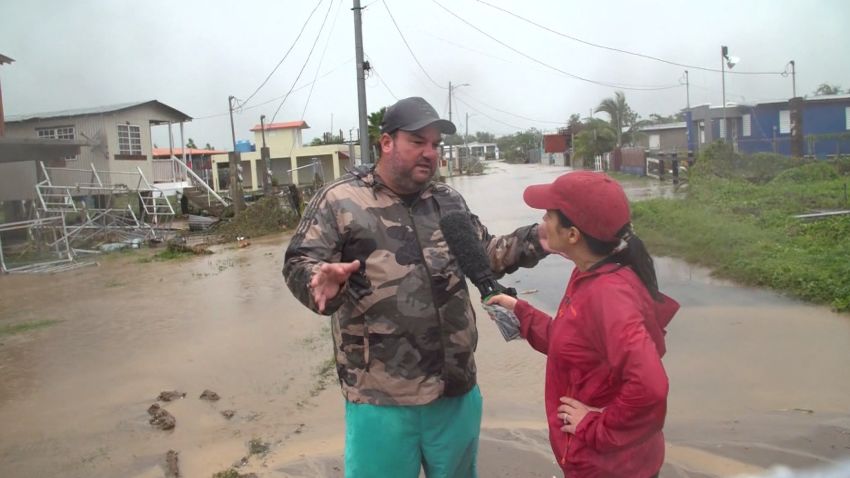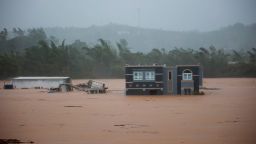As Fiona is moving slowly to the northwest on Monday, it is still dropping flooding rain on Puerto Rico, where more than 1.4 million people are without power. Some parts of the island still bear the scars of Hurricane Maria, which devastated Puerto Rico almost exactly five years ago.
After Hurricane Maria inflicted catastrophic damage to the territory’s infrastructure, it took almost a year for power to be restored across the island.
Samuel Rivera and his mother Lourdes Rodriguez lived without power for about a year after Maria struck, Rivera told CNN’s Layla Santiago. On Sunday morning, they lost power once again, conjuring up similar fears to those they had five years ago.
They said they are also concerned a nearby river may overflow and the trees surrounding their home may be felled by the powerful winds.
Some more context: The hurricane made landfall on the southwestern coast of Puerto Rico Sunday afternoon, bearing down on the island with severe winds of up to 75 miles per hour and bringing 6-24 inches of rain to some areas by the end of the day, according to the National Weather Service.
Fiona will continue to pummel Puerto Rico and eastern portions of the Dominican Republic into Monday. Eastern areas of the Dominican Republic may also see flooding as well as mudslides and landslides in higher areas, according to the hurricane center. Fiona could bring a total of up to 30 inches of rainfall to Puerto Rico and up to 12 inches to eastern and northern Dominican Republic.
LUMA Energy, the main power utility in Puerto Rico, said in a statement Sunday it could be days before power is restored, adding “several transmission line outages” are contributing to the blackout. The process will be done “gradually,” Governor Pedro Pierluisi said in a Facebook post.
The website PowerOutage.us reported the entire island was without power, early Monday morning, adding LUMA had “reenergized some circuits, however there is limited information, and no numbers on how many customers have been restored.”
Power outages have become a familiar crisis for many who live in Puerto Rico. Just five months ago, residents experienced another islandwide blackout after a fire broke out in a power plant.























